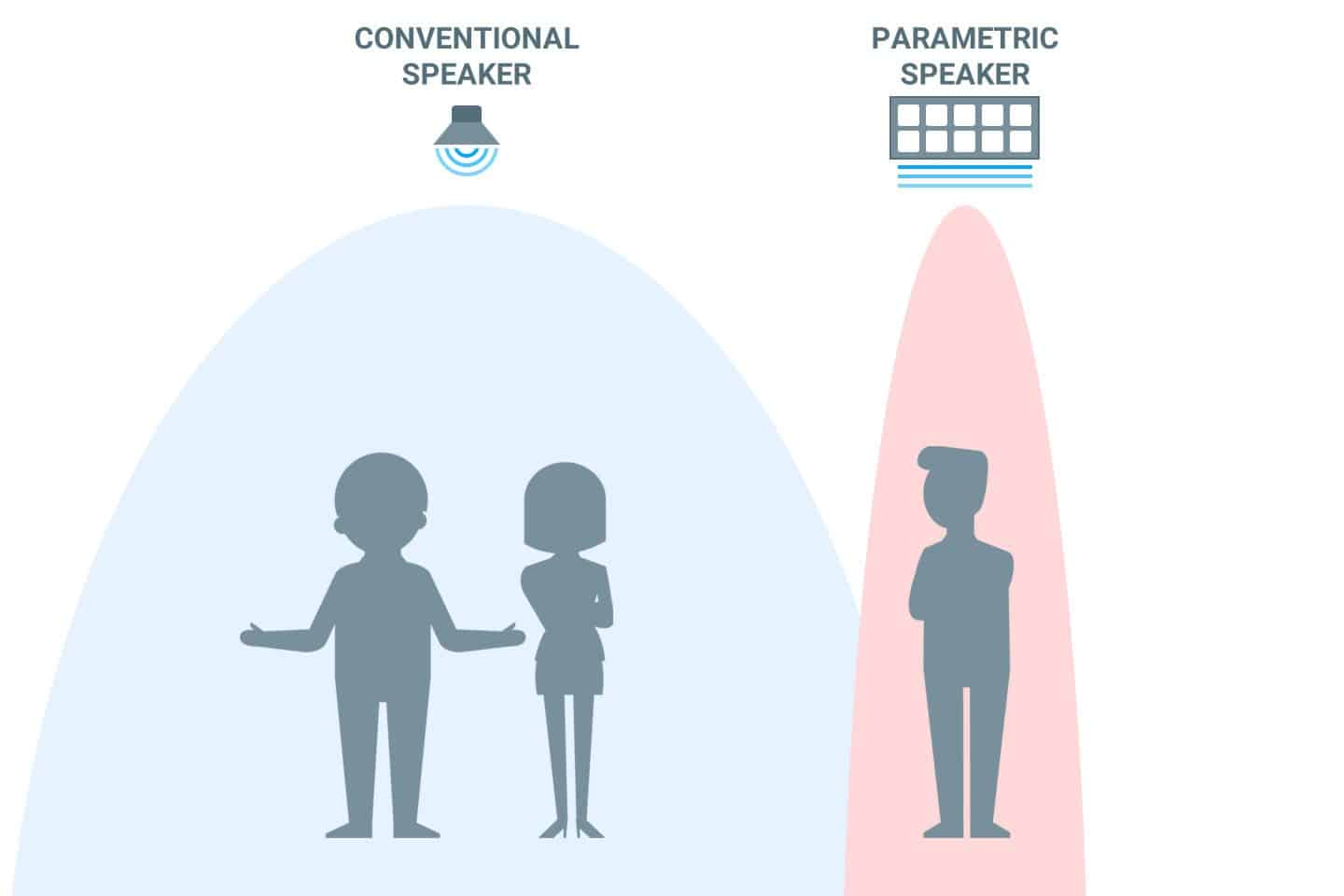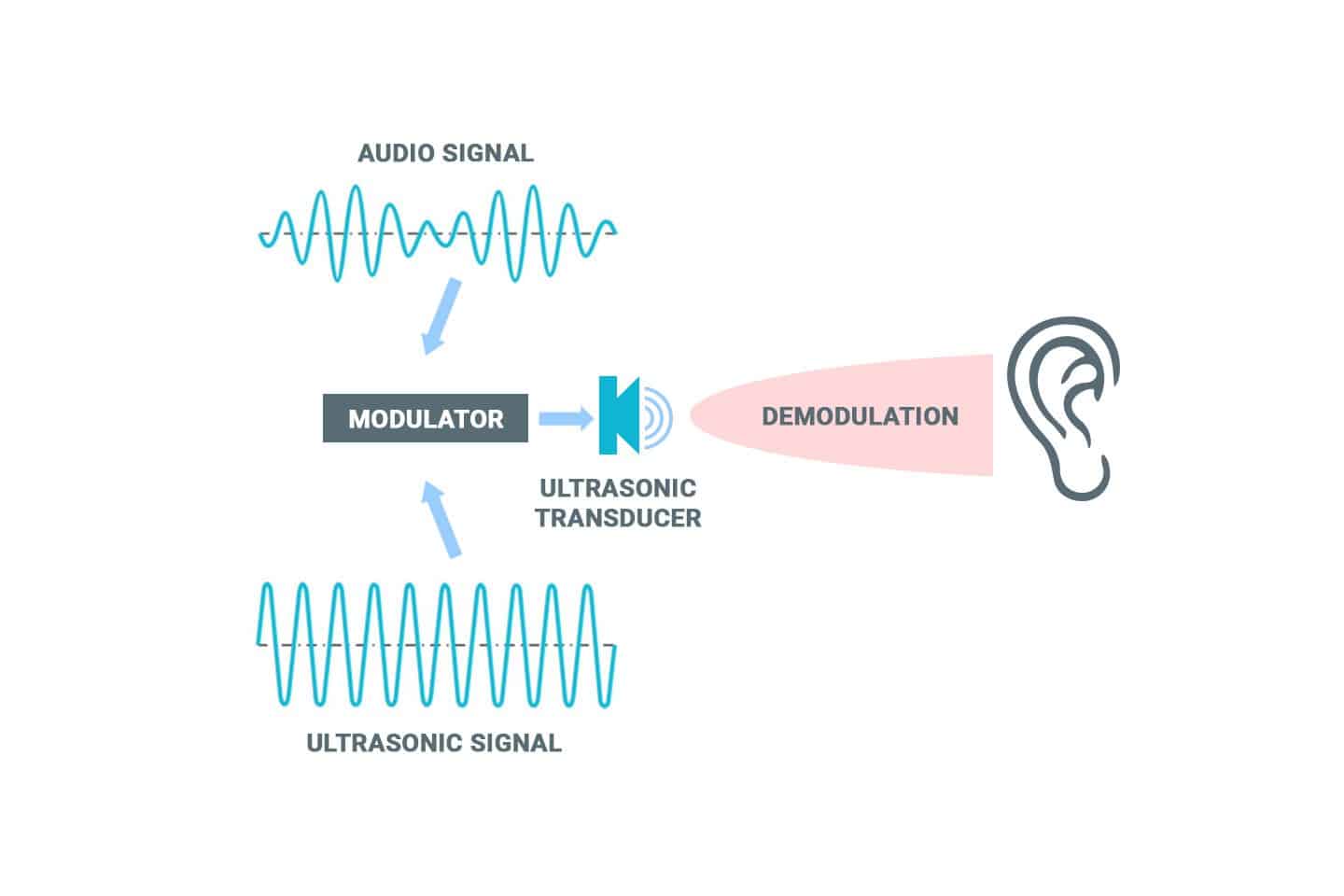Parametric sound
Parametric sound is a phenomenon when ultrasonic waves modulated with audio signal demodulate when traveling through air or encountering other objects and the sound is recreated. As ultrasonic waves have lower diffraction compared to audible frequency waves, ultrasonic waves travel in a narrow beam from the parametric speaker. Therefore, the sound reproduced by the parametric speaker is localized within the beam and is not heard elsewhere. Parametric sound systems can be used, for example, in museums to convey relevant information to visitors next to the artwork but maintain quiet elsewhere. Parametric speakers are ideal for targeted advertising, personal audio and other.

Parametric vs conventional speaker

Parametric sound system schematic diagram
There are a few major obstacles that have to be overcome for a widespread adoption of parametric sound systems. Demodulation is a non-linear process and complex audio signal preprocessing has to be implemented in order to invert this non-linear process and achieve high quality, distortionless sound. Furthermore, demodulation process attenuates low frequency components in the audio signal significantly leading to a poor bass response of parametric systems. Parametric sound reproduction is a second order effect and high pressure ultrasonic waves are needed to achieve high volume sound that can be harmful to humans if safety limits are exceeded. URG is developing algorithms in order to overcome these issues and create parametric systems capable of producing high volume and high quality sound. In addition to this, URG has also developed ultrasonic electrostatic transducers specifically suited for parametric systems.
Patents
Putkis, O., Vanagas, G., Mikolajunas, M. and Virzonis, D., 2020, Method for generating parametric sound and means for carrying out said method, patent application WO2020026005.
